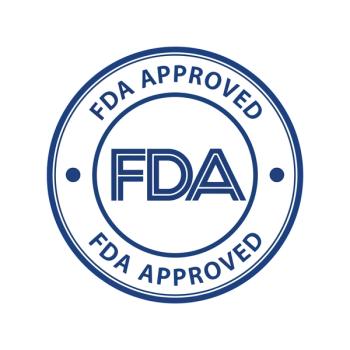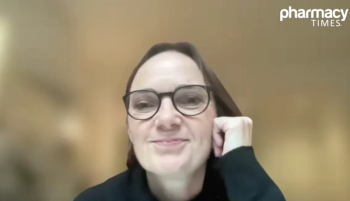
- July 2023
- Volume 89
- Issue 7
Promoting Medication Safety Improves Health Outcomes
Pharmacists should provide guidance on issues such as proper drug disposal and potential drug interactions.
Adverse drug events (ADEs) cause approximately 1 million emergency department (ED) visits each year in the United States. Many factors may cause the number of ADEs to continue increasing, such as new drug approvals, an aging population, and additional indications for medications already on the market.1
Anticoagulants, antibiotics, antidiabetic drugs, and opioid analgesics are the medications that most often contribute to ED visits.1 The Centers for Medicare & Medicaid Services requires that medication therapy management (MTM) programs reduce the risk of ADEs.2 Pharmacists can play an important role in providing medication safety advice to patients through MTM consults (Figure1-5).
MEDICATION SAFETY AND MTM
The FDA launched the Safe Use Initiative to prevent medication errors and ADEs.3 This program involves collaboration among federal agencies, pharmacies, and patients to encourage and monitor safe medication use.3 Safe usage of OTC acetaminophen and nonsteroidal anti-inflammatory drugs (NSAIDs), medication adherence, and dealing with opioid misuse are examples of projects involved in the initiative.3 Pharmacists play a critical role in educating patients about medication safety as part of the Safe Use Initiative.
The FDA’s Drug Safety Communications are important tools for helping pharmacists stay up-to-date on the latest medication alerts. The reports include safety updates based on data from clinical trials and case studies.3
As part of MTM consults, pharmacists should educate patients about the following to promote medication safety4.:
- Brand and generic names of medications
- Medication indication
- Medication strength, dosage, and storage instructions
- Possible adverse effects and how to manage them
- Potential drug interactions
- Drug allergies
- Time of day to administer medication and whether to take it with food
- Strategies for handling a missed dose
- Any foods to avoid while taking medication (eg, grapefruit with certain statin medications)
One retrospective cohort study evaluated pharmacist- led medication safety review (MSR) health outcomes for Medicare Part D beneficiaries.5 The MedWise Risk Score is a computer-based risk stratification tool that was used to initiate the MSR program for the study.5 Patients at highest risk of ADEs and negative outcomes were identified, and pharmacists evaluated study participants for safety-oriented medication-related problems. The pharmacists then developed clinical recommendations that were communicated to the prescribers.5 Of the 4384 study participants who completed MSRs, 602 (13.7%) implemented at least pharmacist recommendation.5
The study results showed that for those participants, there were significant improvements in year-to-year total Medicare costs ($2162 /y lower), Part A Medicare costs ($1855/y lower), hospitalizations (9.1 fewer admissions/ beneficiaries/y), ED visits (10.8 fewer visits/ beneficiaries/y), and mortality (3.8% fewer died in 2019) among participants implementing at least 1 MSR recommendation compared with those who did not receive MSRs.5 These findings highlight the key role that pharmacists can play in medication safety initiatives.
References
- Medication Safety Program. CDC. Updated February 23, 2023. Accessed May 8, 2023. https://www.cdc.gov/medicationsafety/index.html
- Medication Therapy Management. Centers for Medicare & Medicaid Services. Updated April 24, 2023. Accessed May 8, 2023. https://www.cMsgov/medicare/prescription-drugcoverage/prescriptiondrugcovcontra/mtm
- Safe Use Initiative. FDA. August 30,2022. Accessed May 8, 2023. https://www.fda.gov/drugs/drug-safety-and-availability/safe-use-initiative
- Top 10 things you must know about the medicine you are taking. ConsumerMedSafety.org. Accessed May 8, 2023. https://www.consumermedsafety.org/top-ten-tips-lists/top-10-things-you-must-knowabout-the-medicine-you-are-taking
Bankes DL, Jin H, Williams R, et al. Implementing pharmacists’ medication safety recommendations is associated with reduced health care resource utilization and mortality in high-risk older Americans. J Am Pharm Assoc (2003 ).2023;63(1):118-124. doi:10.1016/j.japh.2022.08.022
Articles in this issue
over 2 years ago
Brain Health Watchover 2 years ago
Pet Peeves — Brought To You By The Sassy Pharmacistover 2 years ago
Interactive Case Studiesover 2 years ago
Postnasal Dripover 2 years ago
Expanding Tech-Check-Tech Will Move Pharmacy Into the Futureover 2 years ago
Do Pharmaceutical Brand Colors Affect Consumer Buying Decisions?Newsletter
Stay informed on drug updates, treatment guidelines, and pharmacy practice trends—subscribe to Pharmacy Times for weekly clinical insights.












































































































































































































